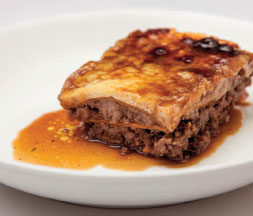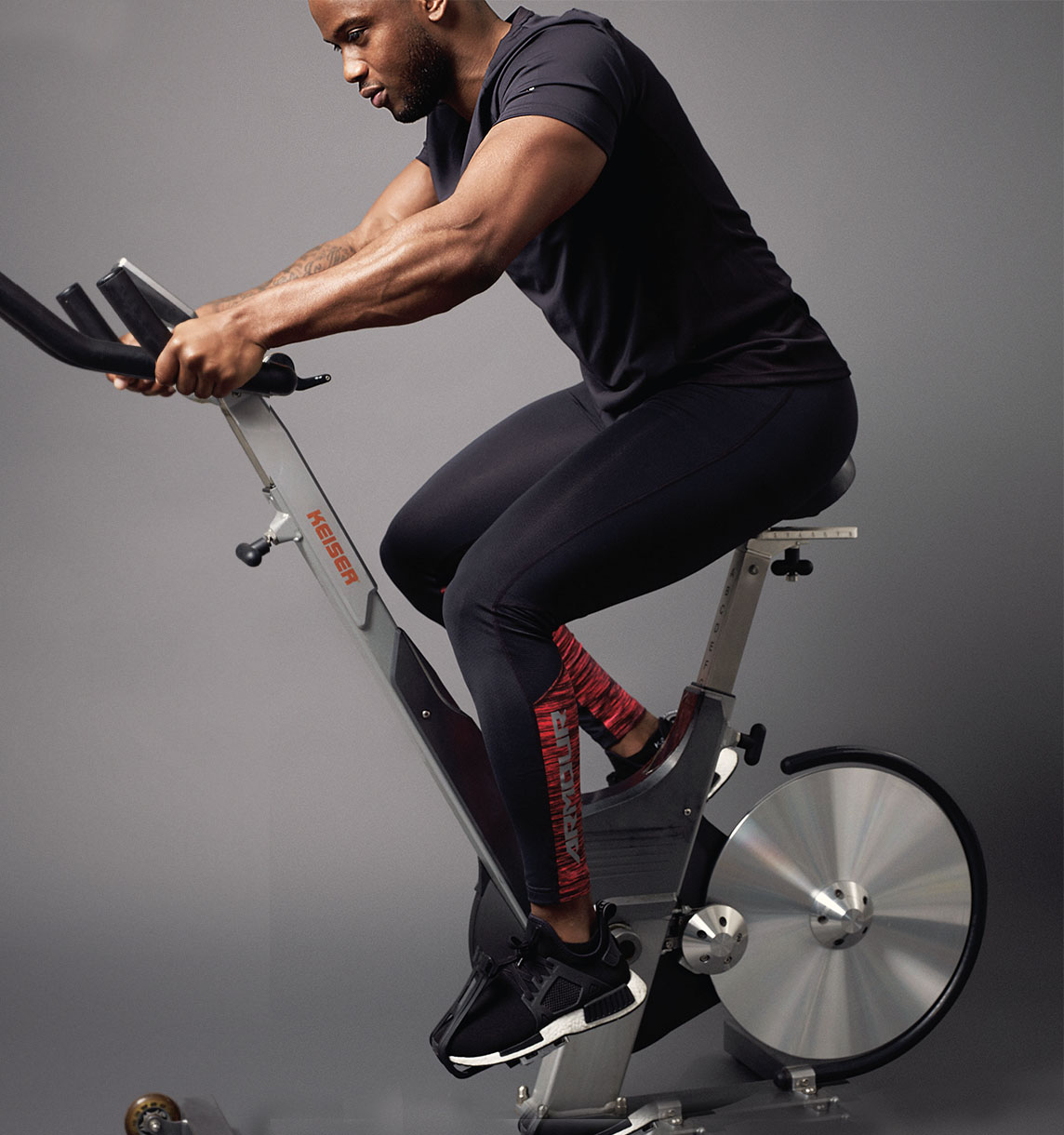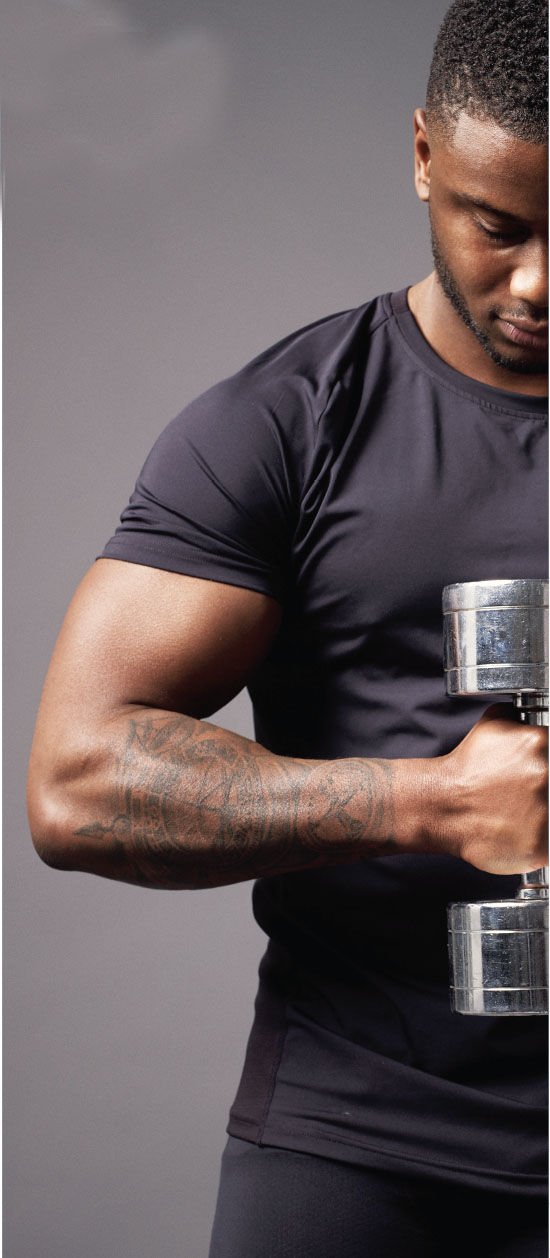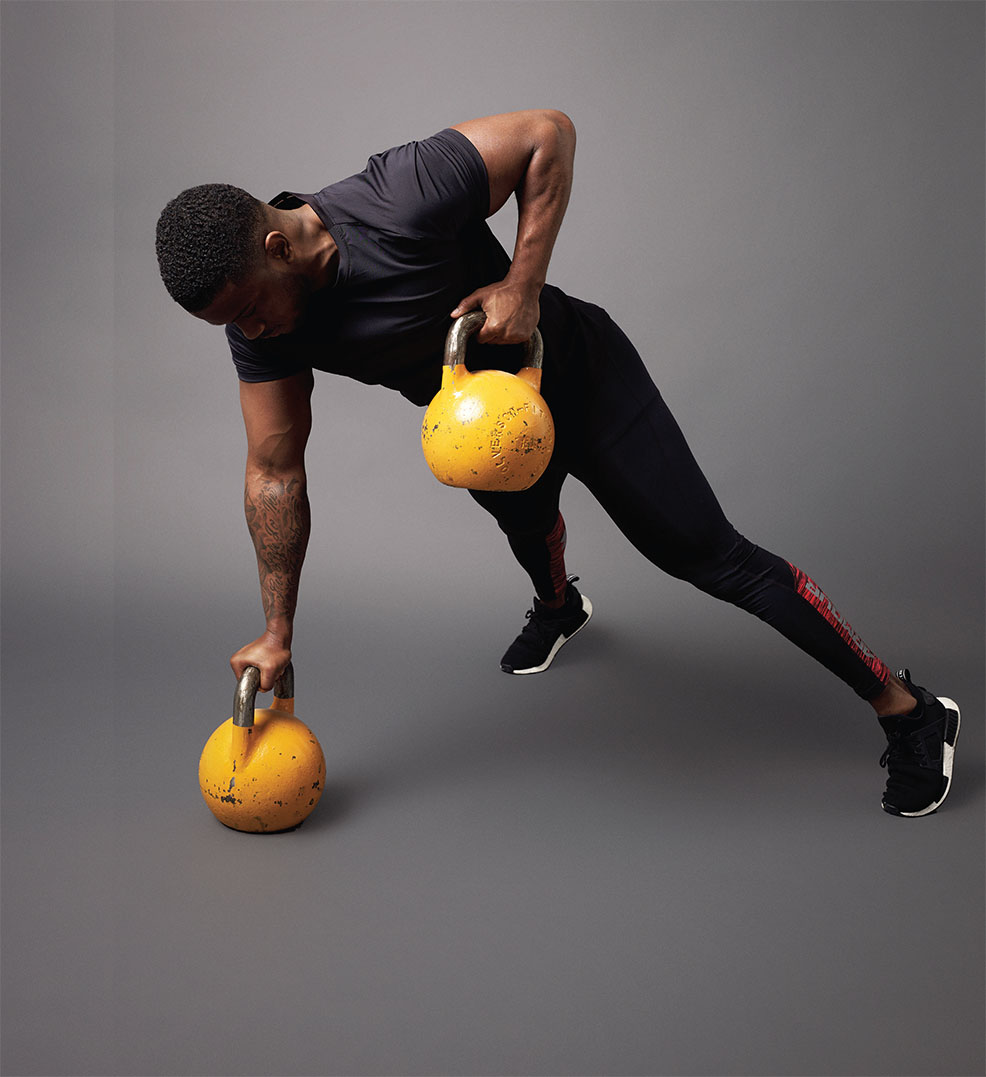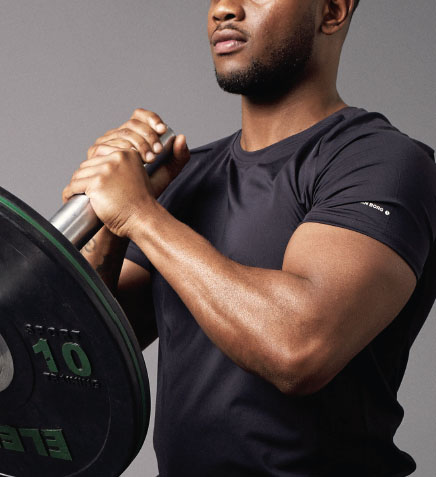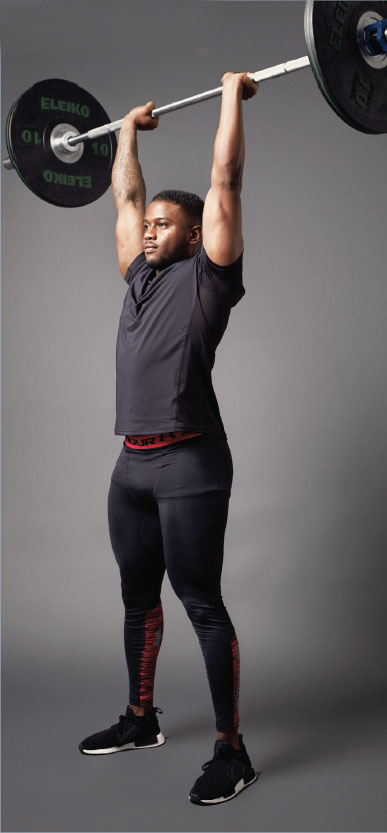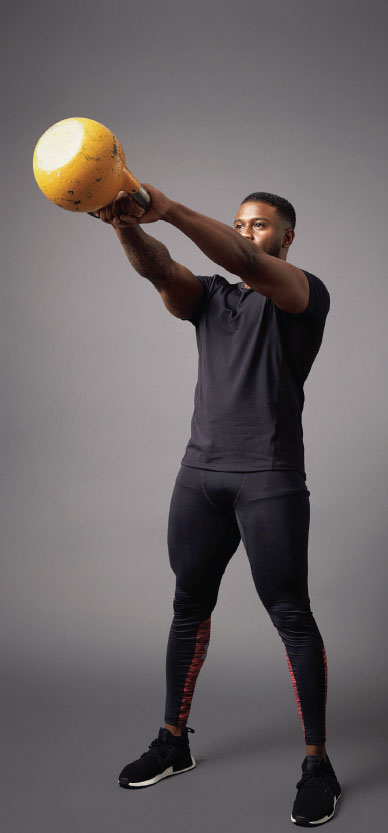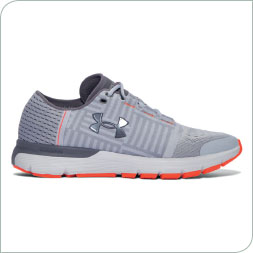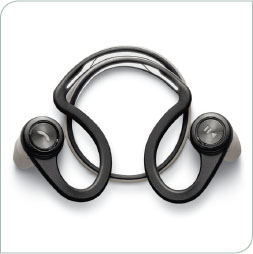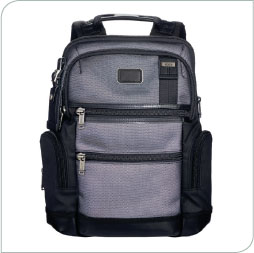“The non-cook is in a helpless position,” says former New York Times food editor Raymond Sokolov, author of How To Cook. “Much like that of a car owner who can’t change a tyre and has to depend on mechanics to keep his car running.” Movie director Robert Rodriguez puts it more bluntly in his video recipe for puerco pibil, the slow-roasted pork dish fetishised in his film Once Upon A Time In Mexico: “Not knowing how to cook is like not knowing how to fuck.”
The point? By learning to cook, you’ll be better equipped to prep healthy food from the simplest ingredients, making it easier to eat well without spending too much time or money. And here’s the better news: cooking doesn’t have to mean squinting at endless recipe books and buying 15 sorts of fresh herbs you’ll never use.
Adam Gray (adamgraychef.com), who’s executive chef at Bourne & Hollingsworth Group, the owner of a Michelin star and runs healthy cooking courses, has selected the recipes you’ll find over the next few pages as the best ones to teach you the basics of knife skills, ingredient prep and cooking on the hob. Once you’ve nailed those, it’ll make everything else easier.
LEANPIZZA
Even if you don’t feel the need to go gluten-free, cooking with gram flour and cauliflower makes this pizza a low-GI option, saving you the bloodsugar spike you’d get from your shop-bought American Hot. By going home-made, you’ll also cut down on the preservatives and fats your typical takeaway includes as non-optional extras, and you’ll be able to add toppings that help, rather than hurt, your efforts to get lean.
Ingredients
FOR THE BASE
400g gram flour (chickpea flour) / ½tsp baking powder / 200g cauliflower, grated / 1tsp ground cumin / 1tsp ground coriander / 3 spring onions, finely chopped / 160ml semiskimmed milk / Natural sea salt / Ground white pepper / 50ml rapeseed oil FOR THE TOPPING 300g organic passata / 200g cooked free-range chicken breast, sliced / 50g baby spinach leaves, washed / 50g fresh parmesan cheese
Why cook with…
GRAM FLOUR
Otherwise known as besan, gram flour – made from chickpeas – is lower in calories than wheat flour but more nutritionally dense: it’s high in fibre, iron, potassium, manganese and vitamin B6.
CAULIFLOWER
Frequently overshadowed by broccoli, the other cruciferous veg that comes in florets is high in betacarotene, quercetin and vitamin C and, according to a study published in Molecular Nutrition And Food Research, is linked to a reduced risk of several cancers.
RAPESEED OIL
Rapeseed has half as much saturated fat as your extra virgin olive oil –although the jury’s still out on whether that’s important – but it’s also worth cooking with because of its omega 3 content and high smoke point, which keeps it stable for cooking.

Keyskills
Know your onions
Most people throw away too much of their spring onions, but prep couldn’t be simpler. Rinse them under cold water, then chop just above the stringy roots to remove them. Take about 2cm off the top, then “roll” your knife – keeping the tip on the surface of your cutting board to cut the rest as you feed them through with your other hand.
Use ’flower power
This recipe uses cauliflower to bulk out the pizza dough – but it’s a good substitute for carbs elsewhere too. Blitz it in a food processor to make a healthier substitute for couscous and rice, or steam it for ten to 15 minutes and then mash it up like potatoes with a splash of coconut milk.
Pick your toppings
Not feeling the chicken? There’s more to life than Hawaiian and pepperoni. Top your crust with red onions for folate and potassium, or mushrooms for selenium and hard-to-acquire vitamin D.
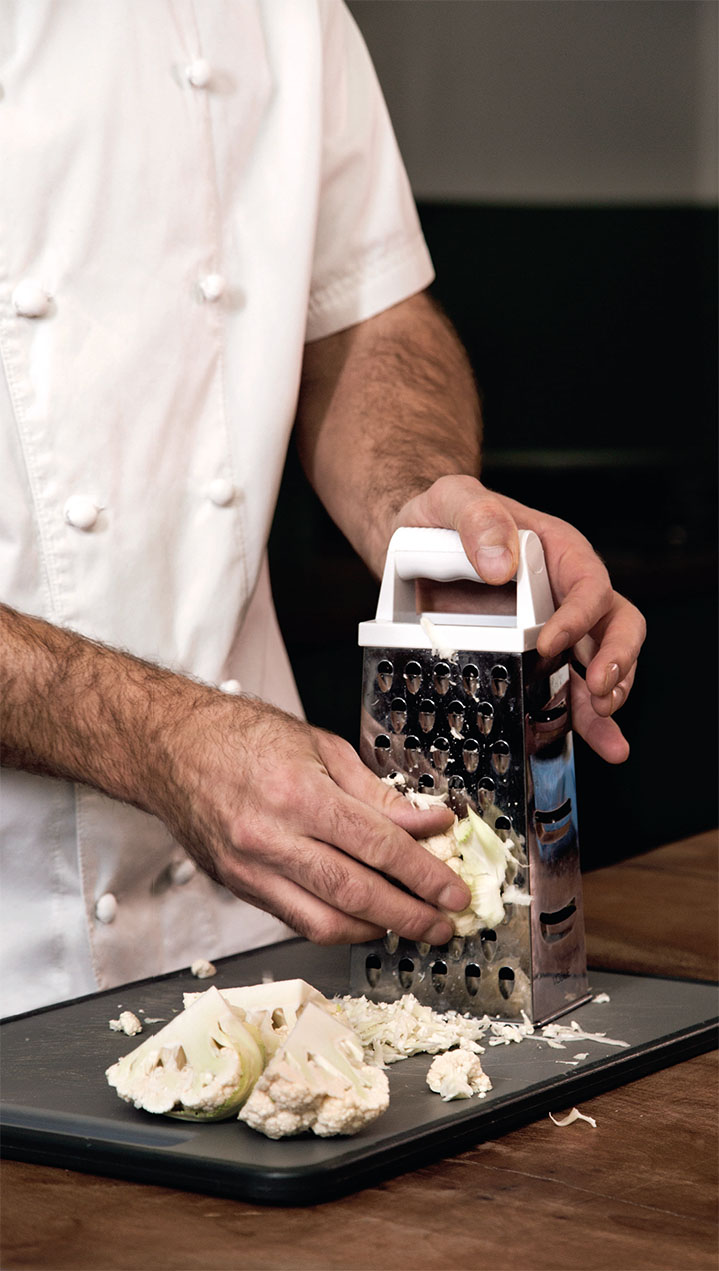
How to make it
• Mix the gram flour, ground cumin, ground coriander, chopped spring onions and grated cauliflower together in a large bowl.
• Add the milk and mix until it forms a doughlike consistency. Add salt and pepper to taste.
• Wrap cling film around the bowl and leave the mixture to rest for ten minutes in the fridge.
• When the dough is rested, remove from the bowl and place on a clean work surface. Use the palm of your hand to gently press the dough flat until you have a disc about the size of a small dinner plate and about ½cm thick.
• Lightly grease a flat baking tray with half the rapeseed oil and place the dough base on it.
• Spread an even layer of passata over the pizza base.
• Place the chicken slices and the baby spinach leaves on top of the passata in an overlapping pattern.
• Drizzle the remaining half of the rapeseed oil over the pizza and finely grate the parmesan evenly over the top.
• Bake in a pre-heated oven at 180°C/gas 4 for 18-20 minutes, until the base is golden brown and the cheese in the topping is melted.
The final dish
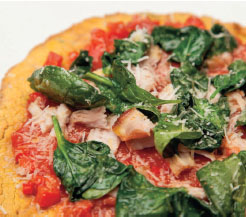
FAT TORCHING SOUP
A can of store-bought soup often contains more sugar than a bowl of Frosties, alongside other undesirable elements that include MSG, modified starches and mechanically separated meat. This home-cooked version cuts out all the bad stuff, and packs in a double-dose of capsaicin-heavy peppers to kick-start your metabolism. Serve it hot in the winter or chilled with a dash of herb oil in the summer – either way, it’s a spicy little number.
Ingredients
8 red peppers, de-seeded and cut into 2cm pieces / 1 large onion, chopped / 2 red chillies, finely sliced / 8 plum tomatoes, roughly chopped / 100ml rapeseed oil / 1.5 litres vegetable stock / Salt and pepper
Why cook with…
RED PEPPERS
If you’re cooking with peppers, bet on red: they have the highest concentration of vitamin C, as well as fatburning capsaicin and an array of other helpful phytochemicals, including a rare combination of six carotenoids.
CHILLIES
Go hot if you can take it – the spicier the chilli, the higher it is in capsaicin, a fat burner that’s may also help reduce some types of inflammation. There’s also some evidence that chillies can reduce blood cholesterol and triglycerides, lowering your risk of a heart attack or stroke.
PLUM TOMATOES
Tomatoes – canned or fresh – are your best source of the carotenoid pigment lycopene, which studies suggest can help prevent prostate, lung and stomach cancers. They’re also an exception to the rule that cooking destroys nutrients – lycopene is better absorbed when it’s been heated.

Keyskills
De-seeding factors
Prepping peppers is laborious unless you know how. Slice off the top and bottom, then make a neat vertical slice down the pepper, allowing you to open it up. Put it skin-side down and work the knife along the inside with the blade parallel to your worksurface, removing the “ribs” and seeds as you unroll it. You’ll end up with a flat, seedfree pepper, ready for chopping.
Sautéeing sorted
Cooking onions is something you’ll do a lot, so do it right. Keep the pan on a medium heat until your oil shimmers, then toss them in. Stir occasionally – you don’t need to throw them around like it’s a cooking show. Unless the recipe demands it, don’t let them start to brown. And remember: red onions are sweeter, so you can get away with cooking them less.
Blitz tactics
Rule one of using a blender: be careful with hot stuff. When you blend soup, steam forms and increases the pressure, which can pop the top off. The fix? Either remove your blender’s central plug and cover the hole with a tea towel or, if you’ve got a holeless blender, start on low and blend gently. Alternatively, invest in a handblender and do it all in the pan.
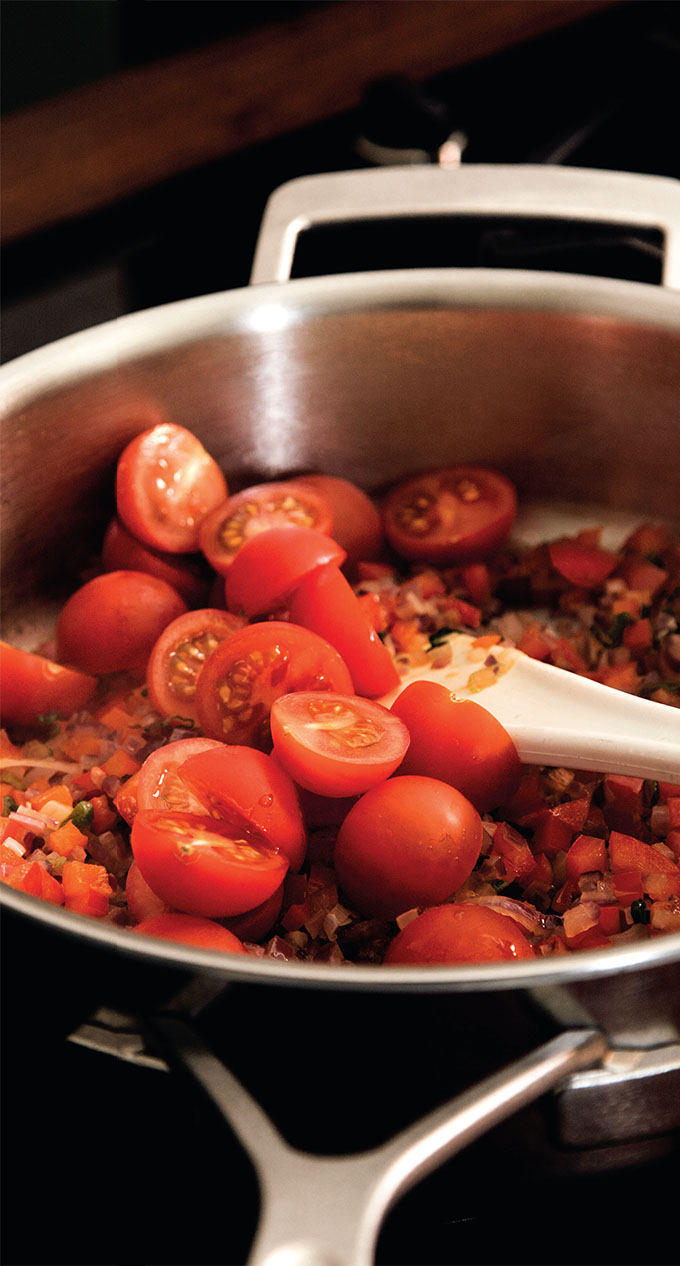
How to make it
• Prepare the peppers, onion, chillies and tomatoes as directed.
• Heat a large thickbased sauce pan to a medium heat. Add the rapeseed oil to the pan.
• Add the onions and chillies to the pan and cook for five minutes, stirring with a spatula until they start to soften.
• Add the red peppers and continue to cook for a further five minutes, stirring occasionally.
• Add the tomatoes and continue to cook until
• Add the vegetable stock and bring to the boil.
• Simmer the soup gently for 15 minutes, then season with salt and pepper.
• Serve the soup chunky, or blitz it in a blender if you prefer a smooth consistency.
The final dish
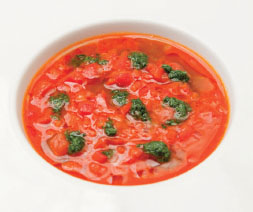
BULKING LASAGNE
Step away from the ready-meal aisle. Lasagne might have the whiff of intimidation about it, but it’s actually a dish that’s simple enough to make, and arguably better when reheated a day or two after you make it. This recipe substitutes sweet potato for starchy carbs, but you don’t have to leave the swaps there – once you’ve tried it once or twice, sub in turkey or lamb for the beef mince, and experiment with the cheese ratios for a solid hit of protein.
Ingredients
500g lean, organic minced beef / 2 red onions, peeled and finely diced / 2 garlic cloves, peeled and crushed / 3 medium sweet potatoes, peeled and thinly sliced into 2-3mm discs / 300ml chunky passata / 100ml rapeseed oil / Worcestershire sauce / 500ml low-fat natural yogurt / 100g mature cheddar cheese, grated / ½ bunch of fresh basil leaves, stalks removed and finely chopped / Maldon sea salt / Ground white pepper
Why cook with…
BEEF
Disregard the red meat scare stories – the ones linked with carcinogenic effects are talking about the processed kind, not raw beef. Good-quality mince is packed with vitamin B12, zinc, selenium and iron, as well as 36g of protein per 100g.
GARLIC
There’s some evidence that the more you smash your garlic, the better it is: chopping activates alliinase enyzymes, which will eventually convert to allicin – a sulphur compound linked to keeping blood pressure under control.
SWEET POTATOES
The sweet potato vs “real” potato war isn’t as clearcut as you think: the former are far higher in vitamin A (438% of your RDA as opposed to, er, none) but otherwise it’s a nutritional near-tie. They’re also a good source of slow-burn energy, making them an ideal sub for higher-GI carbs.

Keyskills
Crush it
How much flavour garlic gives your dish depends on how you prep it: the more cells you rupture, the more potent it gets. Full cloves are bland and even slicing doesn’t do much; crushing with a press or the flat of a knife makes things more pungent, but for ultimate intensity invest in a microplane, which finely minces your cloves for a serious flavour punch.
Slice it fine
In this recipe, you’re replacing sheets of pasta with sweet potato, and thickness is key: make them too hefty, and they’ll be too crunchy by the end of the cooking time. To make thin-slicing easier, get yourself a full-size chef’s knife and keep it sharp – five minutes on a whetstone every couple of weeks will do the trick.
Know your herbs
Chefs will tell you fresh herbs are better than dried, and they’re mostly right – but sometimes it’s fine to reach for the jar. Herbs that flourish in hot, dry climates contain flavour compounds that stay stable at high temperatures. Basil is best used fresh but with dried oregano, bay leaves, sage or rosemary you’ll notice little difference once they’re cooked.
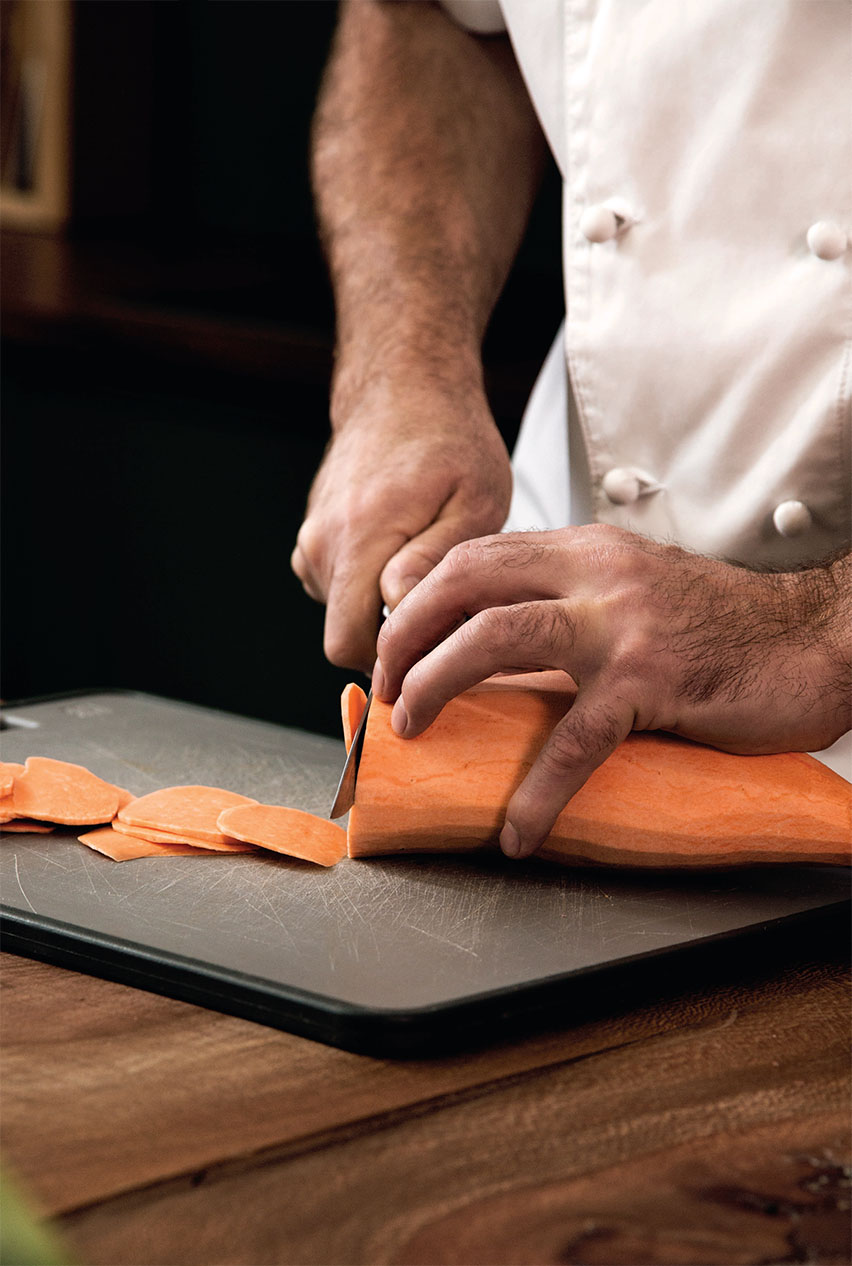
How to make it
• Heat a large thick-based sauce pan to a medium heat. Add the rapeseed oil and then the onions and garlic.
• Cook the onions and garlic for three to four minutes without letting them brown.
• Add the minced beef, making sure you break it up as it cooks using a wooden spoon or spatula so that it browns evenly.
• Continue cooking for a further five minutes, stirring occasionally. Then add the passata and mix thoroughly.
• Bring the mixture to the boil and simmer gently for ten minutes, then add a good splash of Worcestershire sauce and the chopped basil, mixing thoroughly. Season and remove from heat.
How to build it
• Spoon some of the beef mixture into a shallow ovenproof baking dish, so that it completely covers the bottom.
• Place the discs of the raw sweet potato on top of the beef mixture, ensuring that it completely covers the beef mixture.
• Repeat the process so that you have two layers of beef mixture and two of sliced sweet potato, then finish with a layer of beef on top.
• Cover the top layer of beef with yogurt, and then scatter the grated cheese over the top.
• Place the lasagne in a preheated oven at 180°C/gas 4 for 25-30 minutes.
The final dish
